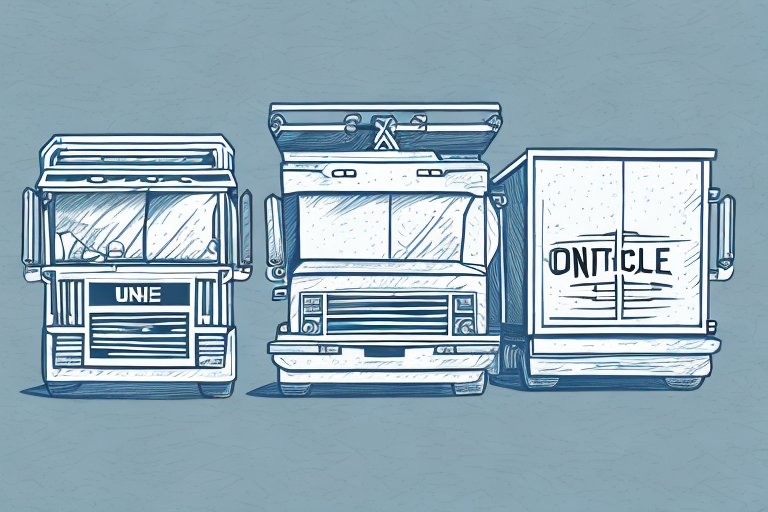How to Negotiate Better Shipping Rates with UDS by Using Better Packaging
Are you tired of paying exorbitant shipping fees for your packages? Shipping expenses can quickly add up and eat into your profits, particularly if your business relies heavily on shipping products to customers. However, by optimizing your packaging and leveraging strategies to negotiate better rates with United Delivery Service (UDS), you can reduce your shipping costs and increase your bottom line.
Why Packaging Affects Shipping Rates
Before we explore how to reduce shipping costs, it's crucial to understand how packaging impacts shipping rates. In general, package weight and size are the two most critical factors that determine shipping fees. The more substantial and larger your package is, the higher your shipping fees will be.
Furthermore, the type of packaging material matters as well. Lightweight and sturdy materials can reduce your package weight, ultimately lowering your shipping expenses. Meanwhile, fragile items may need extra padding and cushioning to ensure they don't become damaged in transit, which can add weight and increase your shipping fees.
Another factor that can affect shipping rates is the destination of your package. Shipping to remote or rural areas may incur additional fees due to the extra distance and time required for delivery. Additionally, international shipping rates can vary greatly depending on the country of origin and destination, as well as any customs fees or taxes that may apply.
It's also important to consider the environmental impact of your packaging choices. Using eco-friendly materials, such as recycled cardboard or biodegradable plastics, can not only reduce your shipping costs but also help to minimize your carbon footprint. Many customers are becoming increasingly conscious of the environmental impact of their purchases, so choosing sustainable packaging options can also be a selling point for your business.
Understanding UDS Shipping Rates and Policies
UDS offers various shipping options to meet the needs of your business, but it's essential to understand their pricing structure and policies. UDS calculates their shipping rates based on a combination of factors, including distance, package weight and dimensions, and shipping speed. The service level you select—such as ground, overnight, or two-day shipping—also impacts your shipping fees.
Additionally, UDS has specific policies regarding the acceptance and transport of certain items. For example, some products may be prohibited or restricted for shipment, and failing to comply with these rules can result in additional fees or legal consequences.
It's important to note that UDS also offers additional services that can impact your shipping rates. For instance, if you require signature confirmation or insurance for your package, these services will come at an additional cost. It's crucial to consider these options when selecting your shipping method to ensure that you're getting the best value for your money.
Finally, UDS has a variety of tools and resources available to help you manage your shipments effectively. From online tracking to real-time updates on delivery status, UDS provides the information you need to stay informed and in control of your shipments. By taking advantage of these resources, you can streamline your shipping process and ensure that your packages arrive on time and in good condition.
How to Calculate Shipping Costs for Your Business
To negotiate better rates with UDS, it's crucial to calculate your shipping costs accurately. To do this, you'll need to consider several factors, including your package's dimensions, weight, and destination. Fortunately, UDS offers a shipping calculator tool on their website that estimates shipping fees based on these factors.
Alternatively, you can utilize transportation management software to track and manage all your shipping expenses automatically. This can help you identify problem areas, such as packages that are consistently over a specific weight threshold, and eliminate unnecessary costs.
Another important factor to consider when calculating shipping costs is the shipping method you choose. UDS offers a variety of shipping options, including ground, air, and expedited shipping. Each method has its own cost and delivery time, so it's important to choose the one that best fits your needs and budget.
It's also important to factor in any additional fees, such as insurance or signature confirmation, that may be required for your shipment. These fees can add up quickly, so be sure to include them in your calculations to avoid any surprises.
The Impact of Packaging on Shipping Costs
As previously mentioned, the type of packaging you use can significantly impact your shipping fees. For instance, using lightweight materials can help you reduce weight and, therefore, shipping costs. Additionally, using packaging materials that protect your items from damage and prevent them from shifting around in transit can ensure that your packages arrive safely, eliminating the need for costly returns or reshipments.
Another factor to consider when it comes to packaging and shipping costs is the size of your packages. Shipping carriers often charge based on both weight and size, so using smaller packaging can help you save on shipping fees. However, it's important to balance this with the need to adequately protect your items during transit.
Finally, it's worth noting that the type of shipping service you choose can also impact your packaging choices and costs. For example, if you opt for expedited shipping, you may need to use more durable packaging materials to ensure your items arrive on time and in good condition. On the other hand, if you're shipping items that are less fragile or time-sensitive, you may be able to use more lightweight and cost-effective packaging options.
Types of Packaging Materials That Can Lower Shipping Costs
In general, some packaging materials are more cost-effective than others. For instance, bubble wrap is an excellent material for cushioning fragile items but can add significantly to your package's weight and increase your shipping fees. Meanwhile, air pillows or foam inserts may be lighter and still offer the necessary protection. Additionally, using thinner cardboard can reduce the weight of your package while retaining the necessary durability.
Another way to lower shipping costs is to consider using eco-friendly packaging materials. These materials are not only better for the environment, but they can also be lighter and more cost-effective. For example, using biodegradable packing peanuts made from cornstarch can be a great alternative to traditional foam peanuts. Additionally, using recycled cardboard boxes can be a cost-effective and sustainable option. By using eco-friendly packaging materials, you can not only save money on shipping costs but also reduce your environmental impact.
How to Choose the Right Packaging for Your Product
Choosing the right packaging is critical to prevent damage to your products and reduce your shipping costs. Consider the size and weight of your item and select packaging materials that effectively protect them without adding unnecessary weight. Additionally, different products may require specific packaging materials to ensure their safety. Do your research and test various materials to find the best fit for your product.
Another important factor to consider when choosing packaging is the environmental impact. Consumers are becoming increasingly aware of the impact of packaging waste on the environment, and are more likely to choose products with eco-friendly packaging. Consider using materials that are recyclable, biodegradable, or made from sustainable sources.
It's also important to think about the branding and marketing potential of your packaging. Your packaging is often the first thing a customer sees when they receive your product, so it's important to make a good impression. Consider using packaging that reflects your brand's values and aesthetic, and that stands out on a crowded shelf. You can also use packaging to provide additional information about your product, such as ingredients or usage instructions.
Tips for Reducing Packaging Size and Weight
Reducing the size and weight of your packaging is crucial to optimize your shipping fees. Pack items tightly to prevent movement but avoid over-packing, as this adds weight to your package. Consider using flat-rate boxes or envelopes for heavier items or updating your packaging design to reduce the empty space.
Another way to reduce packaging size and weight is to use eco-friendly materials. Consider using biodegradable or recyclable materials for your packaging, such as paper or cardboard. This not only reduces the weight of your package but also helps to reduce your environmental impact. Additionally, you can use packaging inserts, such as air pillows or bubble wrap, to fill any empty space in your package and prevent damage to your items during shipping.
Importance of Proper Labeling for Accurate Shipping Rates
Proper labeling is crucial to ensure accurate shipping rates. Ensure that your package's dimensions and weight are correctly labeled on each package to avoid unexpected fees. Additionally, be aware of UDS's labeling requirements to avoid additional fees or delayed shipments.
Another important aspect of proper labeling is including the correct shipping address and contact information. Double-check that the recipient's name, address, and phone number are accurate and clearly visible on the package. This will help ensure that the package is delivered to the correct location and that the recipient can be contacted if necessary.
Finally, it's important to consider the type of packaging materials used for your shipment. Using sturdy, durable materials can help prevent damage to your items during transit, reducing the likelihood of returns or additional fees. Additionally, using eco-friendly packaging materials can help reduce your environmental impact and appeal to environmentally-conscious customers.
Negotiating Better Rates with UDS: Tips and Strategies
If you have identified many areas where you can improve your packaging, it may be time to negotiate better rates with UDS. Start by reviewing your shipping history and identifying areas where you can optimize your practices. Consider reaching out to a UDS representative to discuss your shipping needs and explore available discounts and promotions.
How to Leverage Volume Discounts for Shipping Costs
If your business ships a high volume of products, you may be eligible for volume discounts from UDS. Consider negotiating with UDS to secure lower rates, which can add up to significant cost savings over time.
Tracking and Monitoring Your Shipping Expenses
Tracking and monitoring your shipping expenses can help you identify cost-saving opportunities and improve your shipping processes over time. Consider using transportation management software to track your shipping history and identify areas where you can optimize your practices.
The Benefits of Working with a Third-Party Logistics Provider
If managing your shipping logistics is too overwhelming, consider working with a third-party logistics provider. These companies specialize in optimizing your shipping practices and can help you negotiate better rates with UDS to reduce your shipping costs.
Case Studies: Businesses That Reduced Shipping Costs Through Better Packaging
Many businesses have achieved significant cost savings by optimizing their packaging practices. For example, one company reduced its packaging weight by 25%, resulting in a 10% reduction in shipping costs. Another business eliminated oversized packaging, reducing their annual shipping expenses by 20%.
Conclusion: Achieving Cost Savings Through Smart Shipping Practices
Reducing your shipping costs doesn't have to be a daunting task. By optimizing your packaging practices, negotiating better rates with UDS, and leveraging technology and analytics, you can achieve significant cost savings over time. Remember, every penny saved on shipping fees can help increase your bottom line and grow your business.








